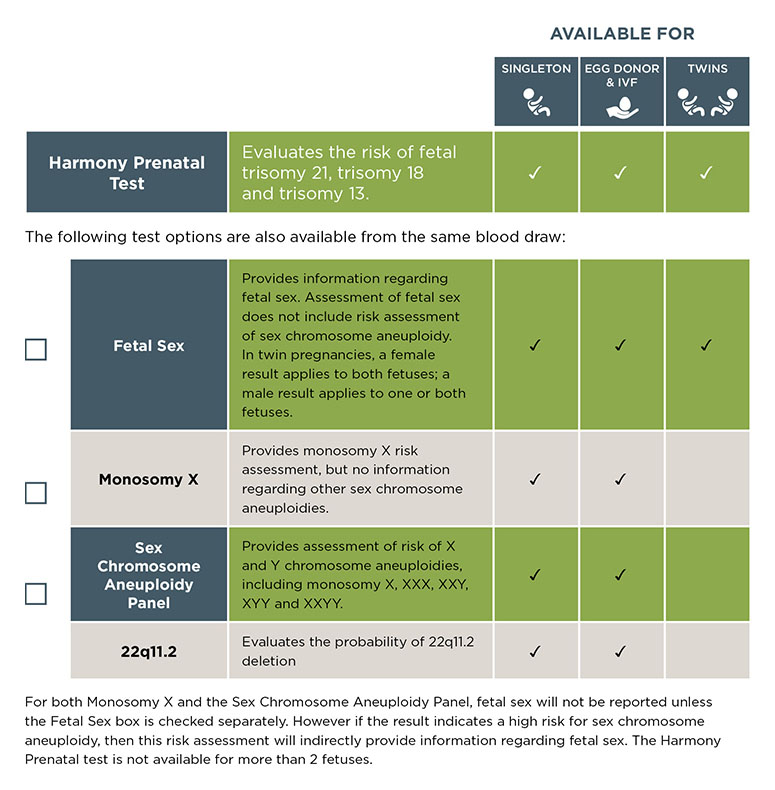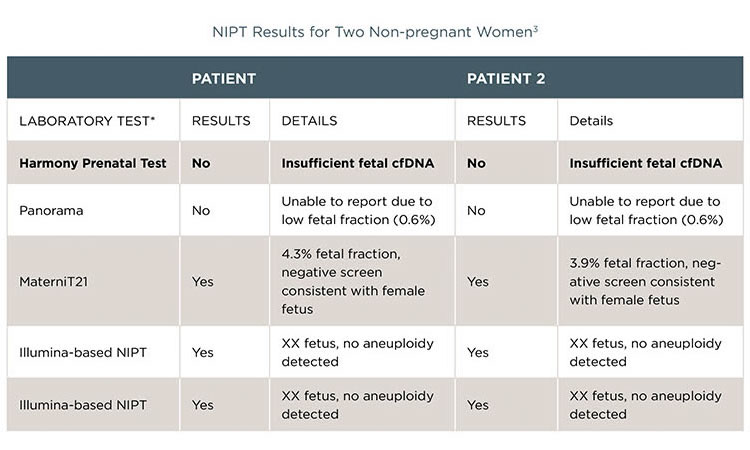
Most broadly studied NIPT
Demonstrated in studies involving >268,000 women in >72 peer-reviewed publications.

Fewer complex conversations
The Harmony test menu focuses on clinically relevant conditions, minimizing overall false positive rates.

Confidence in results
Results based on demonstrated accurate fetal fraction evaluation.

Most broadly studied NIPT
Demonstrated in studies involving >268,000 women in >72 peer-reviewed publications.1
The Harmony test has been studied in more scientific publications than any other cell-free DNA-based prenatal test.1 Performance of the Harmony test has been extensively demonstrated in singleton and twin pregnancies and in women of any age or risk category.3,4,5,6 Other peer-reviewed studies have evaluated clinical implementation7 and the accuracy and reproducibility of the Harmony fetal fraction assessment.2
Fewer complex conversations
The Harmony test menu focuses on clinically relevant conditions, minimizing overall false positive rates.
“More” is not necessarily “better”.
Other NIPT labs offer testing for panels of rare microdeletion syndromes with limited medical value. Each condition tested has an associated false positive rate and adds to the total false positive rate of the test.
Harmony focuses on clinically relevant conditions and provides flexibility to order only the tests that are appropriate in a given situation. This minimizes unnecessary invasive procedures due to false positive results, while addressing the conditions that are likely to be of greatest concern for patients and physicians.

Confidence in results
Results based on demonstrated accurate fetal fraction evaluation.
Fetal fraction, the relative amount of fetal cfDNA in the mother’s blood compared to the total cfDNA, is an important quality metric for NIPT.8,9,10 cfDNA-based prenatal tests that do not accurately evaluate nor require a minimum threshold of fetal fraction may release results based solely on maternal DNA.11 That’s why International Society of Prenatal Diagnosis (ISPD) , American College of Obstetricians and Gynecologists (ACOG), and American College of Medical Genetics and Genomics (ACMG) have emphasized the importance of fetal fraction in cfDNA-based testing.8,9,10 The Harmony test incorporates and reports fetal fraction in its test result and provides a personalized probability score for each patient.
The accuracy and reproducibility of the Harmony fetal fraction assessment has been demonstrated in a peer-reviewed study including over 47,500 clinical samples.7 The importance of fetal fraction accuracy was highlighted when researchers submitted the blood of two non-pregnant women for NIPT at five different laboratories. The Harmony test correctly reported insufficient fetal cfDNA for analysis. Laboratories that do not measure fetal fraction or do not measure fetal fraction accurately provided a result based on maternal cfDNA.11

References
- Demonstrated by 72 peer-reviewed studies using the Harmony prenatal test as of Jan 2021.
- Schmid et al. Ultrasound Obstet Gynecol. 2018; doi:10.1002/uog.19036
- Norton et al. Am J Obstet Gynecol.2012 Aug;207(2):137-8.
- Stokowski et al. Prenat Diagn. 2015 Dec;35(12):1243-1246
- Nicolaides et al. Am J Obstet Gynecol.2012 Nov;207(5):374.e1-6.
- Gil et al. Fetal Diagn Ther.2014;35:204-211.
- Kagan et al. Ultrasound Obstet Gynecol.Sep 19. doi:10.1002/uog.18905.
- Benn et al. Prenat Diagn 2015; 35: 725–734.
- Gregg et al. Genetics in Medicine 2016 Oct; 18(10):1056-65.
- Committee Opinion No. 640: Obstet Gynecol 2015; 126: e31-37.
- Takoudes and Hamar.Ultrasound ObstetGynecol 2015;14:112-116.

